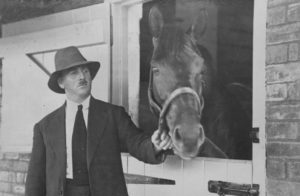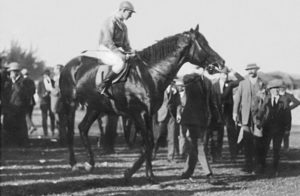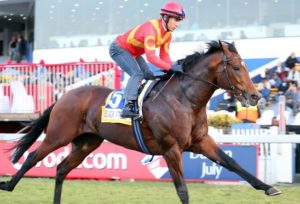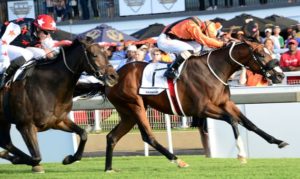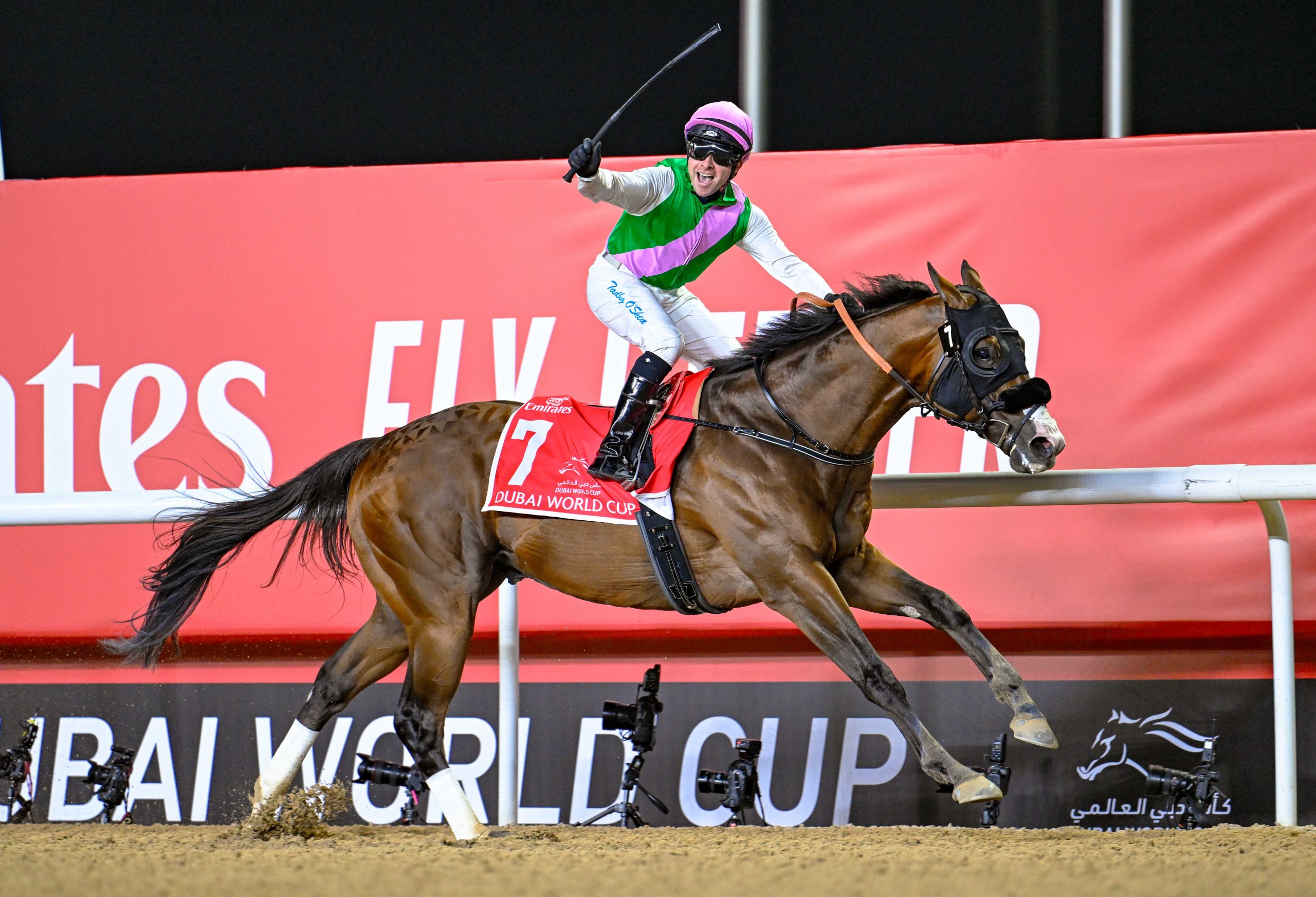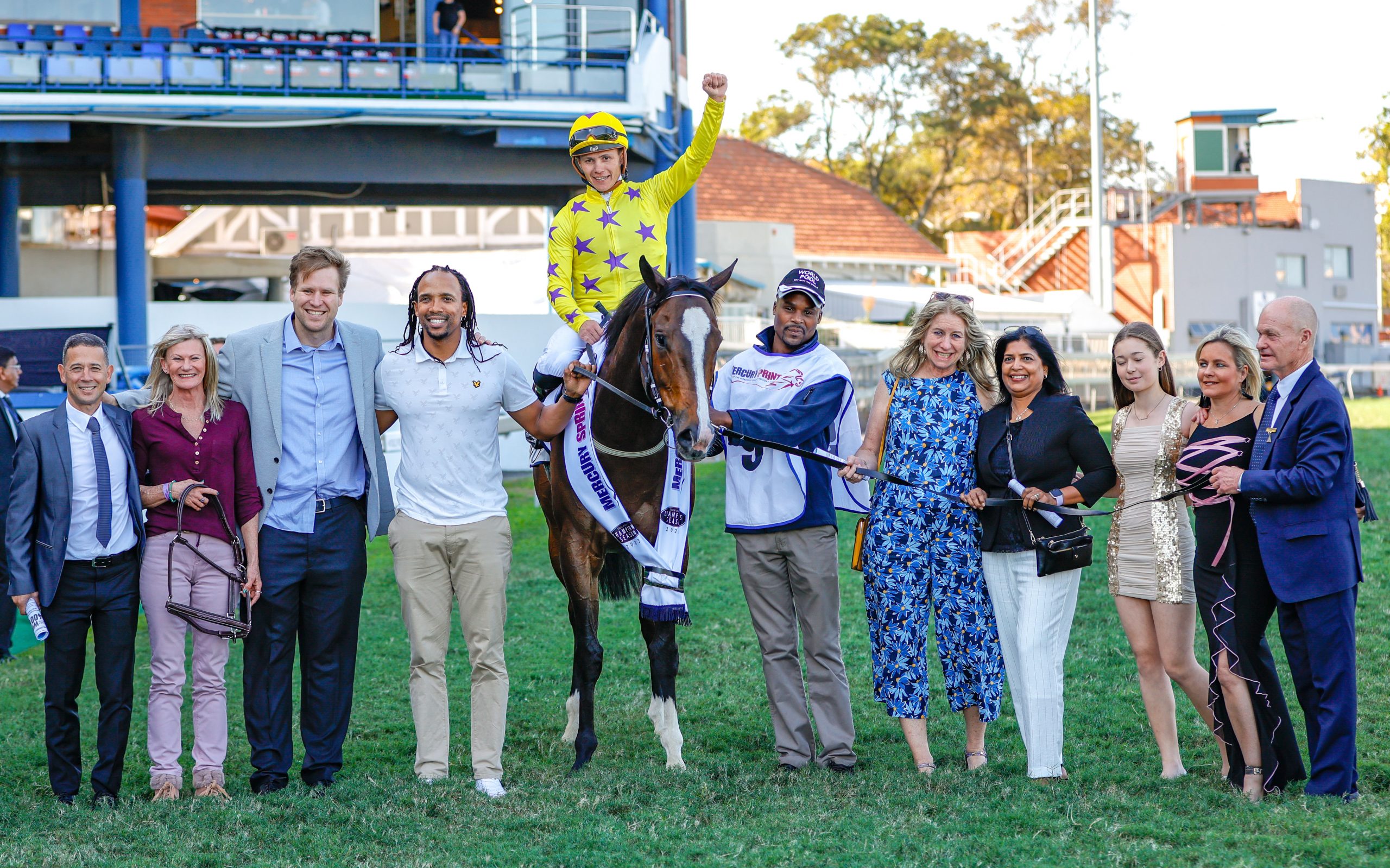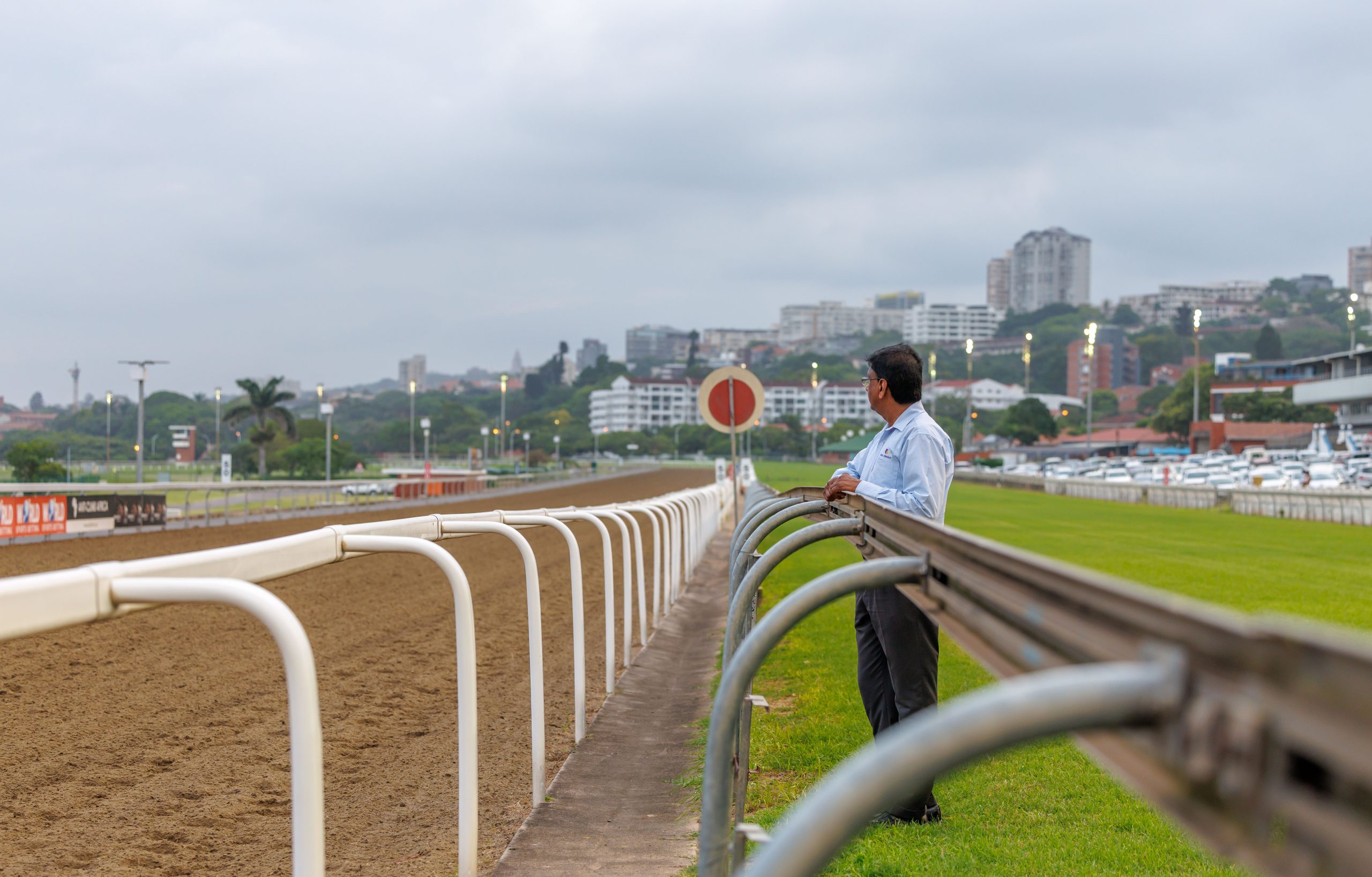In his wonderful tome Shantaram, Gregory David Roberts wrote, “We know who we are and we define what we are by references to the people we love and our reasons for loving them”. Our history and our culture give us a sense of purpose and a sense of perspective with which to view our progress. If you cannot understand what has gone before, you cannot possibly make sense of what is happening right now. In other words, history gives us context and the key to understanding everything.
Unfortunately our racing heritage is poorly recorded, preserved and understood – perhaps this is the reason the current product is deemed of so little value? Fortunately, in Charles Faull, we have someone who has made it his life’s work to collect our heritage, study and interpret it and thank God for that, because in his hands, pages of the racing calendar take on bright, noisy, colourful life and our racing greats thunder across the turf again in glorious technicolour.
If the definition of genius is the infinite capacity for taking pains, then Charles richly deserves the label. Asked to share some of his greatest July stories, he comes brandishing volumes of research – racing calendars, catalogues and reams of notes bristling with annotations in his bold black pen. In true Charles fashion, the story comes bit by bit over several days and – best of all – wrapped in several other stories, which create an interwoven web spreading the length and breadth of our turf history. If you are looking for tips for the July, I will warn you in advance that this is not for you. If, however, you are looking for knowledge and insight that may last you every July for the rest of your life, read on.
July greats
Asked to name the greatest July story, Charles names Full Dress, who won the July in 1930. Although that was Syd Garrett’s first July victory as a trainer (and incidentally as an owner), he had already won the race twice as a jockey. Garrett, known as the Wizard of Roamer Lodge, is considered one of the greatest trainers this country has ever seen. However, to fully appreciate Syd Garrett, one first needs to be introduced to Jim Russell – perhaps the greatest horseman this country has ever seen – and a horse called Pamphlet, one of the greatest horses ever to tear up the sods on South African turf.
Their Story
Charles has meticulously pieced Pamphlet’s story together from old racing calendars, newspaper clippings and first hand stories from Stan and Cookie Amos, who were apprenticed to Syd Garrett. Syd Garrett once said, ‘There are good horses, there are top class horses, and then there’s Pamphlet and Moonlit. I trained many top class horses, world-class in fact, but none of them were within a stone of Pamphlet and Moonlit.’ What makes Pamphlet such a great horse is that he consistently outperformed WFA terms, which makes his story particularly pertinent given this year’s July weights.
Pamphlet was bred in England by Mr J Musker and raced in Ireland as a 2yo for two places from 5 starts. Described as “A horse of abnormal power and size”, Pamphlet caught the eye of trainer Jim Russell and was purchased for his client Mr Briton in 1915.
Pamphlet was by William Rufus out of a St Simon mare and Charles explains, “In those days the impetus was on bringing good horses in from England. Thanks to the likes of Randlords like Jim and Solly Joel and Abe Bailey, we imported as many as a 100 good English and French horses every year to race in South Africa. We’re talking sons and daughters of world class stallions, particularly prior to World War II so we were seeing the best the world had to offer.”
Longevity
“Russell’s horses were never pushed before they were ready. Many were allowed to remain entire and most only reached their greatest achievements after they were fully physically mature. Charles’ father was the great horse vet, George Faull and he recalls, “My father used to say “What you leave alone in the beginning you get back 10 fold in the end. Jim Russell lived by this and it was this patience and foresight that gave us the mighty Pamphlet.”
Pamphlet started his SA campaign at 3, going to post 10 times, mainly over sprint distances, mostly finishing out of the money. As a 4yo, Pamphlet had another 10 starts. His first few runs were over sprint distances and he was sent postwards at long odds. However, on 18 November 1916, he lined up for a warm favourite for 10 furlong bottom division handicap at Milnerton and duly cantered home. “He could read and write, this horse,” chuckles Charles. “When the money was down, he produced the goods.”
Russell’s giant finally started coming into himself as a 5yo. “This is where the fire started,” confirms Charles. After wins in Durban and Cape Town, Pamphlet won the 1917 Summer Handicap at Turffontein on 22 December. Four days later, he contested the two mile Transvaal Handicap, conceding 23lbs to finish 3rd (“a serious run,” interjects Charles) and a week later, he ran again in the Goldfields handicap, finishing 5th under E. Shaw. After dead-heating for 2nd in the Winter Handicap, Pamphlet headed south for the 1918 Durban Handicap. Starting 3-1 favourite under a good weight of 122lbs, Pamphlet obliged by 1.25 lengths.
Four days after his July triumph, Pamphlet contested the Grand Stand handicap as even money favourite, and conceding 32lbs over 2800m, was beaten a head and a neck into third. Incredibly, Russell sent him out yet again on 13 July in the 3200m Berea Handicap. With a young Syd Garrett in the irons, Pamphlet finished a short head second to Renegade, conceding 28 lbs.
Hitting his straps
On 10 August, with Garrett in the saddle again, Pamphlet ran in the 3200m August Handicap, where he conceded a staggering 51lbs to be beaten into third by 1.75 lengths. The fully grown Pamphlet reportedly stood at 17’1hh. “You’ve got to picture this young boy, riding this massive horse. Garrett rode at around 98lbs at the time, so had to carry 30lbs of dead weight!”
Syd Garrett partnered him for the rest of his 6yo year, in which he ran excellent places in the Champion Stakes, Jockey Club Stakes, Germiston Handicap and Natal Handicap, always carrying – and conceding – welterweights.
As a 7yo, Charles says with satisfaction, “he really hit his straps.” Conceding 47lbs, Pamphlet was 1.25 lengths second at Greyville on 2 August and then contested the 1918 Met, going down half a length to dual Met winner, Battleplane, conceding 26lbs. He won the Suburban Handicap by half a length, conceding 37lbs to Barnstormer and then finished 1.25 lengths second to Polychromy in the 1919 Summer Handicap. “Polychromy was by world champion sire Polymelus and owned by Sir Abe Bailey – what strong connections SA had to the world’s best.”
On 1 January 1920, Pamphlet won the Champion Stakes by 1.5 lengths giving away 2 stone to second placed Relish. Three weeks later he placed in the Benoni Jockey Club Stakes. After a short break he was back in April, finishing 4th in the Johannesburg Autumn Handicap before contesting the Jockey Club Stakes a week later, conceding 25 lbs (and carrying 15lbs more than WFA) to win by a neck.
Carrying 9st 8lbs, Pamphlet won his second July on 3 July 1920. The second highest weight in the field that year was Polygamist (another son of Polymelus) carrying 7st 9, a difference of nearly 2 stone.

PAMPHLET and 18 YO Syd Garrett defy 134 lb and a massive weight concession to the whole field to win by almost 3 lengths from the worst draw in the 1920 Durban July (photo: Form Organisation)
To cement his brilliance, one week after the July, Pamphlet contested the Berea Handicap over 2 miles at Greyville. Carrying 10st 8lbs and conceding 52 lbs, Syd Garrett rode him to victory over the top class 4yo Tower Bridge (6st 11) by a length.

7 days after his 1920 July win Pamphlet concedes 52 lb to the smart stayer Tower Bridge in the Berea Handicap over 2 miles at Greyville (photo: Form Organisation)
Pamphlet then retired to stud, but unfortunately failed to live up to expectation.
Weighting the July
Charles makes no bones about his opinion, “The July is a brutal race with brutal conditions that keeps humiliating equine excellence. 99% of races are won not by the best horse, but by the best handicapped horse and it’s important to understand that what the eye sees, is not what happened.”
Charles begins by grouping runners into their respective age groups. “The logic should be ‘what would the weights be in a WFA?’ to try to understand the extent to which horses are advantaged / disadvantaged by the conditions of the race.” He then assigns what he believes to be their correct WFA weights to compare against what each horse has been assigned for the race. Given that 1.5lb in weight equates to about a length, an interesting picture starts to emerge.
Working off Charles’ system, at 55.5kgs all the 3yos are better off than WFA, apart from Bela-Bela and Abashiri. “How can they grade the SA Derby form 4kgs better than the Cape Derby form? It’s My Turn beat some good horses by 2 lengths and gets less than Abashiri who had to run his eyeballs out. I fail to see what logic allows them to give a 3yo such a disadvantage over horses that ran him that close in the Derby,” he exasperates.
Top 3yo crop
“Derby winners It’s My Turn and Abashiri could be superstars in the making. Black Arthur and Marinaresco couldn’t have been more impressive in their prep victories and the 55,5 kg 3YO’s meet the high weights on very fair terms. I have great respect for classic 3YO’s Rocketball , Samurai Blade, Ten Gun Salute, Mambo Mime and Bela-Bela (53 kg would have been fairer for her).”
“Although 3yo’s have won the race, I would be looking at older horses, that we know will stay, with good current form and that are better off at the weights than WFA. My recommendation would be looking for a pool of horses that you can perm in a quartet or trifecta, depending on your budget.”
“French Navy and Mac De Lago are both high class 4Y0’s who trialled well in the Gold Challenge. Saratoga Dancer was bred for 2400m and St Tropez and Dynamic are both horses that are looking for further. Mac De Lago ran a great trial and you can’t discount The Conglomerate.”
“Solid Speed is the only 5yo in the field and his form suggests he is peaking at 5. Personally, I’d like to see this horse run well – the connections have been long-standing clients, Stuart Randolph has a good big race temperament and it would be fun to see the team get the double. Solid Speed had a huge weight in the Gold Vase, we know he stays and we know he has speed. He carries 55,5kgs, which means Abashiri would have to beat him by 10 lengths at WFA. In other words, Abashiri would need to be a Pamphlet to beat him – the question we have to ask is whether he is one?”



